Reasoning models #
During the first years of LLM development, the largest quality improvements originated from scaling up the training data. However, this strategy eventually met its limits, as the amount of available, unused data was shrinking fast. Even more worryingly, an increasing percentage of new texts had been generated by the LLMs themselves, which could lead to a collapse of new models. As a result, developers had to find other ways of improving the output of their models. They found a solution in so-called “reasoning” traces.
Chain-of-thought prompting #
The origin of reasoning models lies in chain-of-thought prompting, a prompting strategy that proved very effective for the first generation of LLMs. In chain-of-thought promptingm (Wei et al. 2022), LLMs are instructed to generate intermediate reasoning steps before they give the final answer to a question. This was found to lead to much more accurate responses.
Let’s look at an example. Suppose you give a vanilla language model an arithmetic task like this:
The cafeteria had 23 apples. If they used 20 to make lunch and bought 6 more, how many apples do they have?
If the LLM immediately formulates an answer, there is a good chance this is incorrect. This is because answering this question requires multiple calculations. First 20 must be subtracted from 23, and then 6 must be added to the intermediate result. Therefore we’d like to prompt the LLM to work in steps rather than jump to the final answer straight away.
This can be achieved in two ways. Wei et al. 2023’s original solution is to include a similar
example in the prompt with a response that includes such reasoning steps. In this way, the language model is primed to react
to a new task in the same vein. Instead of writing The answer is 27, it might now generate the following reasoning chain, which leads to the
correct result:
The cafetaria had 23 apples originally. They used 20 to make lunch. So they had 23-20=3. They bought 6 more apples, so they have 3+6=9. The answer is 9.
Their paper shows that his behavior can lead to large jumps in accuracy, not just for arithmetic, but also for commonsense and symbolic reasoning tasks.
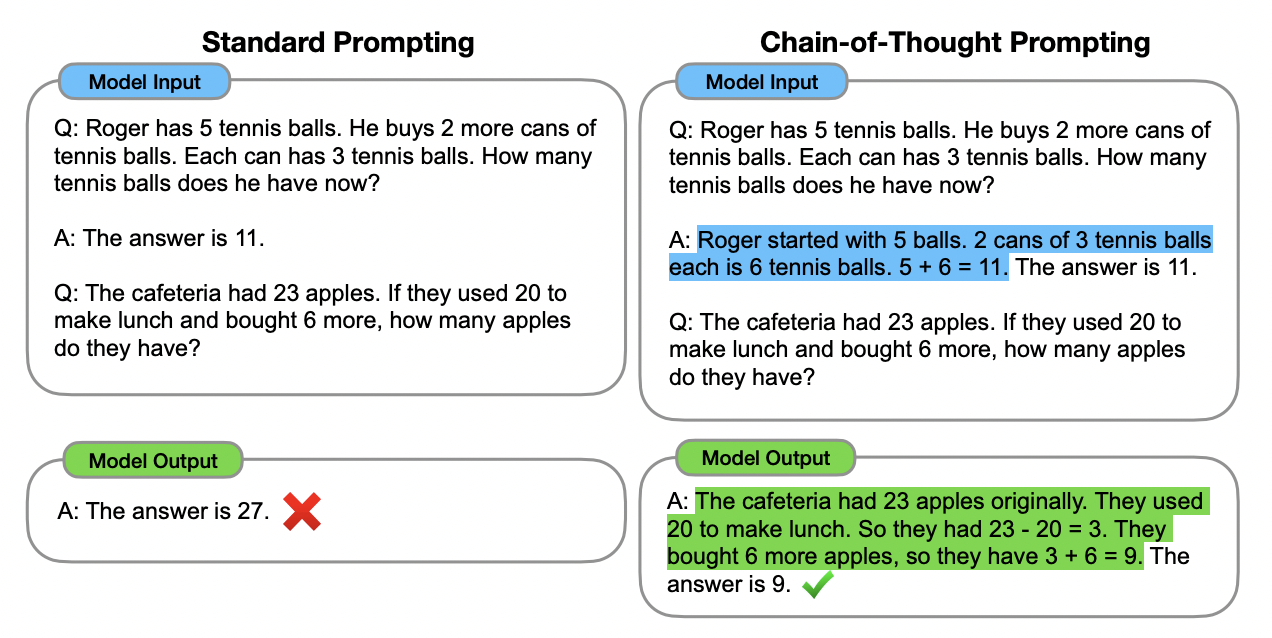
Chain-of-thought prompting triggers language models to generate intermediate reasoning steps before giving their final answer (from Wei et al. 2022).
A second, simpler way to trigger this “reasoning” behavior is to simply prompt an LLM to think step by step. Even this simple extension of your prompt can already lead to more accurate answers. For example, it is well-known that non-reasoning models like GPT-4o often have problems counting the number of letters in a word, like the number of r’s in cranberry. Prompting such a model to think step by step often fixes this problem:
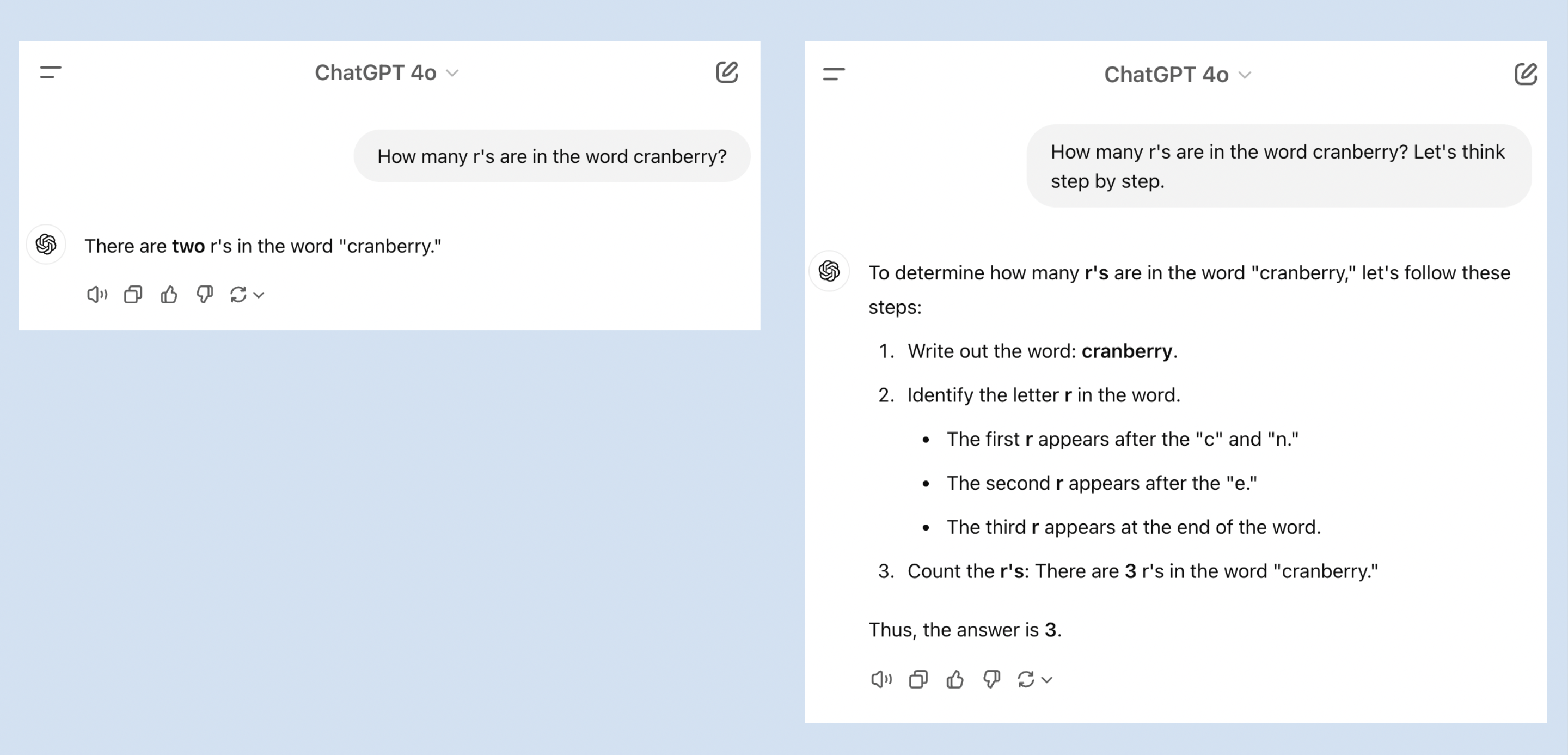
Merely adding ‘Let’s think step by step’ to your prompt can already lead to more accurate answers.
From prompting to training #
More than any other prompting technique, chain-of-thought prompting has shaped the development of LLMs. Initially, developers added chain-of-thought instructions to the system prompts of their chatbots. These system promts are the prompts with which every conversation starts, but that remain invisible to the user. For example, the system prompt of Claude-3.5-sonnet contained the following instruction:
When presented with a math problem, logic problem, or other problem benefiting from systematic thinking, Claude thinks through it step by step before giving its final answer.
This update to Claude’s system prompt meant that individual users didn’t have to spell this out in their own prompts anymore.
But the change didn’t stop there. LLM developers also started incorporating reasoning traces in the training regime of their LLMs, explicitly training the models to output long chains of thought. These often contain hundreds or thousands of words and allow models to break down complex tasks into smaller steps, revise their solution and explore alternative paths. Experiments showed that model accuracy on challenging tasks like math and programming improved dramatically with the length of their reasoning traces — or, more informally, the time the models spend “thinking”, not just during training, but also during actual usage:
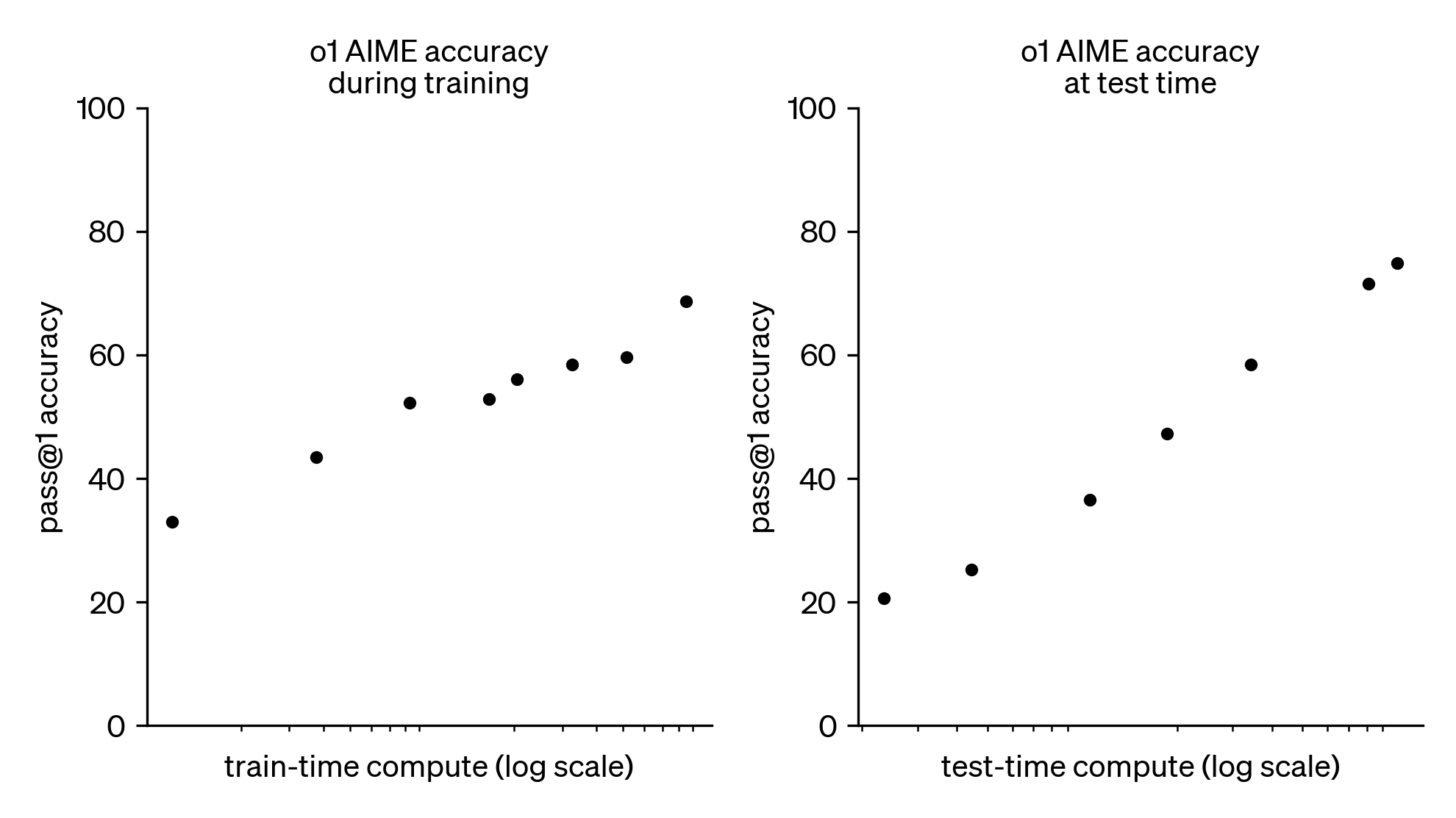
The performance of OpenAI’s o1 reasoning model does not only improve with longer training (left) but also with time spent ’thinking’ during usage (right).
(Source: OpenAI)
How do these models learn to “think”? Typically this is done with several carefully crafted training datasets. The first of these is a “cold start” set of manually curated prompts and responses with a reasoning trace. Because this dataset is far too small to lead to robust performance, models then continue to train on reasoning responses they have generated themselves. Of course, at this early stage many of such responses are unreliable, and the final answer must be checked before we know if they present a positive or negative training example. Therefore reasoning models are optimized mainly for verifiable tasks like math and programming, where it is fairly easy to validate an answer. Through this combination of handcrafted and automatically generated training data, LLMs can learn to reason in a consistent manner.
Examples of reasoning models #
One of the most well-known reasoning models is DeepSeek’s R1 model, which caused quite a stir when it was first released. Not only did it show that China had all but caught up with the US in artificial intelligence; DeepSeek’s models had also been far cheaper to train than many of their competitors. To see a concrete example of a reasoning trace, let’s ask R1 to write a haiku on artificial intelligence. As the video below shows, it first recalls what a haiku is and then explores some potential themes (like learning, data or algorithms). After that, it generates a draft line by line, which it checks fo content as well as syllable count. Only when that is all done does it return the final haiku.
Many models today are hybrids between standard and reasoning LLMs. GPT-5, for example, doesn’t always use its reasoning capabilities. It has an internal router that considers every prompt and decides whether to “reason” or not. Claude’s Sonnet and Opus models also feature reasoning capabilities, as do Google’s Gemini Flash and Pro. Most providers also allow users to control the length of reasoning traces, to find the best balance between cost, quality and speed, although this is often only available to developers that integrate the models through their API.
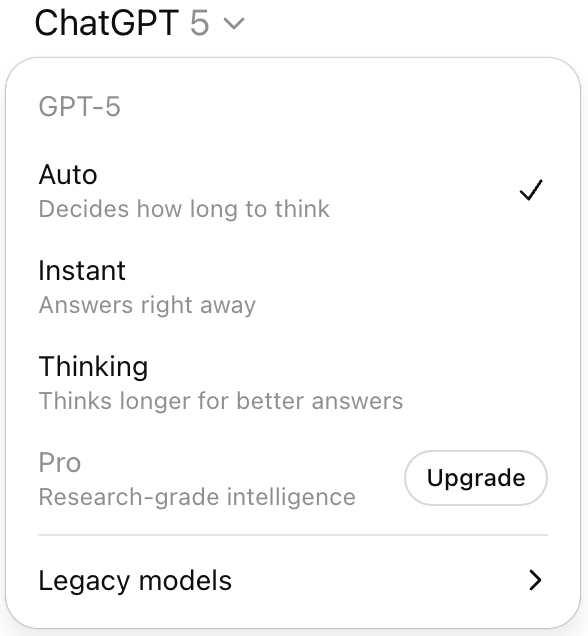
GPT-5 has an internal router that considers our prompt and decides whether to ‘reason’ or not.
Let’s not antropomorphize #
You may have noticed my frequent use of quotation marks in this chapter. This is because it’s important to stress that reasoning models don’t really think or reason — they just generate intermediate words that break down a complex task into simpler steps. So when ChatGPT informs us that its model thought for 1 minute 57 seconds, it was mindlessly writing rather than thinking. Indeed, researchers from Arizona State University urge everyone to Stop Anthropomorphizing Intermediate Tokens as Reasoning/Thinking Traces, arguing that casting this process as thinking “is actively harmful, because it engenders false trust and capability in these systems, and prevents researchers from understanding or improving how they actually work” (p.9).
Indeed, the team at Anthropic reported that Reasoning Models Don’t Always Say What They Think (Chen et al. 2025). To test the faithfulness of reasoning traces, they presented Claude Sonnet and DeepSeek-R1 with a set of multiple choice questions, both with and without a hint included in the input. These hints could take various forms: sometimes the correct answer could be inferred from a visual cue (e.g., a tick mark); other times the prompt included an answer suggestion (e.g. A Stanford professor indicates the answer is A) or the correct answer had appeared earlier in the conversation. In all cases, both Claude and DeepSeek-R1 showed a tendency to follow this hint — yet their verbalized reasoning processes rarely acknowledged doing so. While reasoning models were considerably more “honest” than standard LLMs, their explanations were faithful in just 25% (Claude) and 39% (DeepSeek) of the cases. Interestingly, the researchers also observed that unfaithful explanations were typically longer than faithful ones, and that models were less likely to admit using a hint when the question was more difficult or when the hint was presumably obtained in an unethical way (e.g., when the prompt mentioned unauthorized system access). In other words: do use a reasoning model for complex tasks, but treat its “thinking” with suspicion.
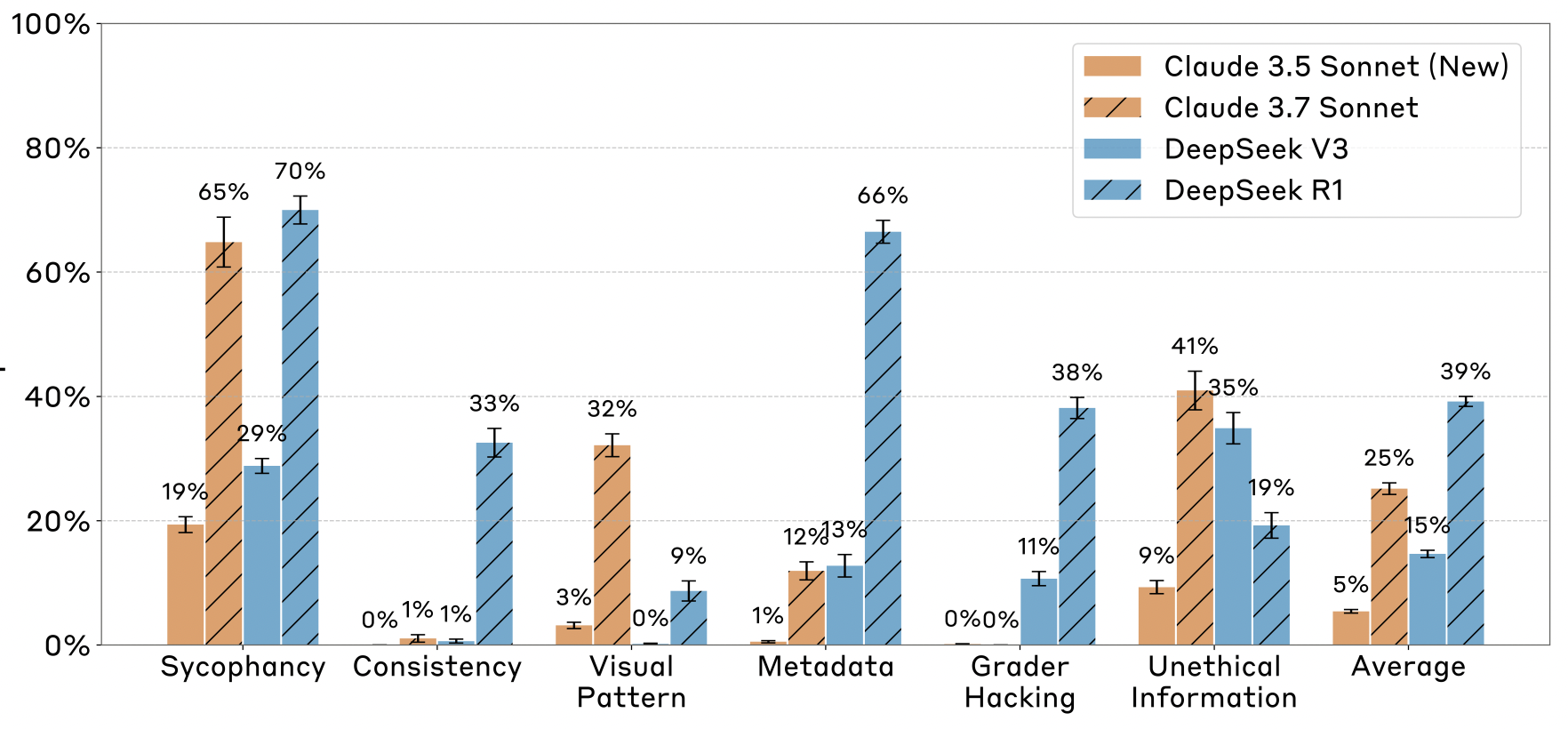
The percentage of faithful explanations (referring to the hint) for 4 models and 6 types of hints. Source: Chen et al. (2025)
The same observation is true for chains of thought returned by standard LLMs, too. For example, Turpin et al. (2023) showed that LLMs are sensitive to bias in the prompt when they answer multiple choice questions: when the first answer is the correct one for all example questions in the prompt, models are typically triggered to select the first answer for a new question as well. When they’re asked to provide their chain of thought, however, they “rationalize” their choice and give a completely different explanation.
Our earlier example, where we prompted a model to count the number of r’s in the word cranberry also illustrates why we shouldn’t put too much confidence in chains of thought. In its second step, GPT-4o claimed that the first r appears after the c and n, which is clearly not true: it appears after the c but before the n. This illustrates that even when the intermediate steps are not always reliable, on average they do lead to more accurate answers.